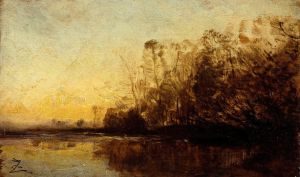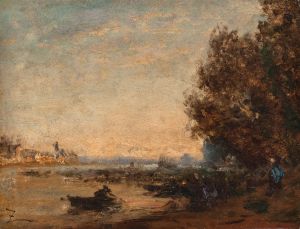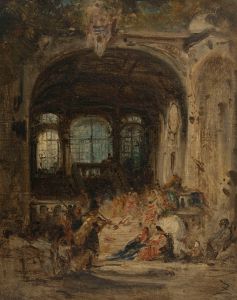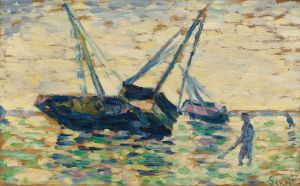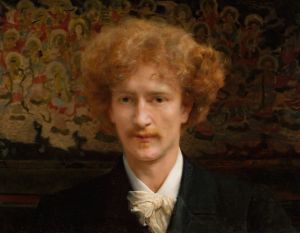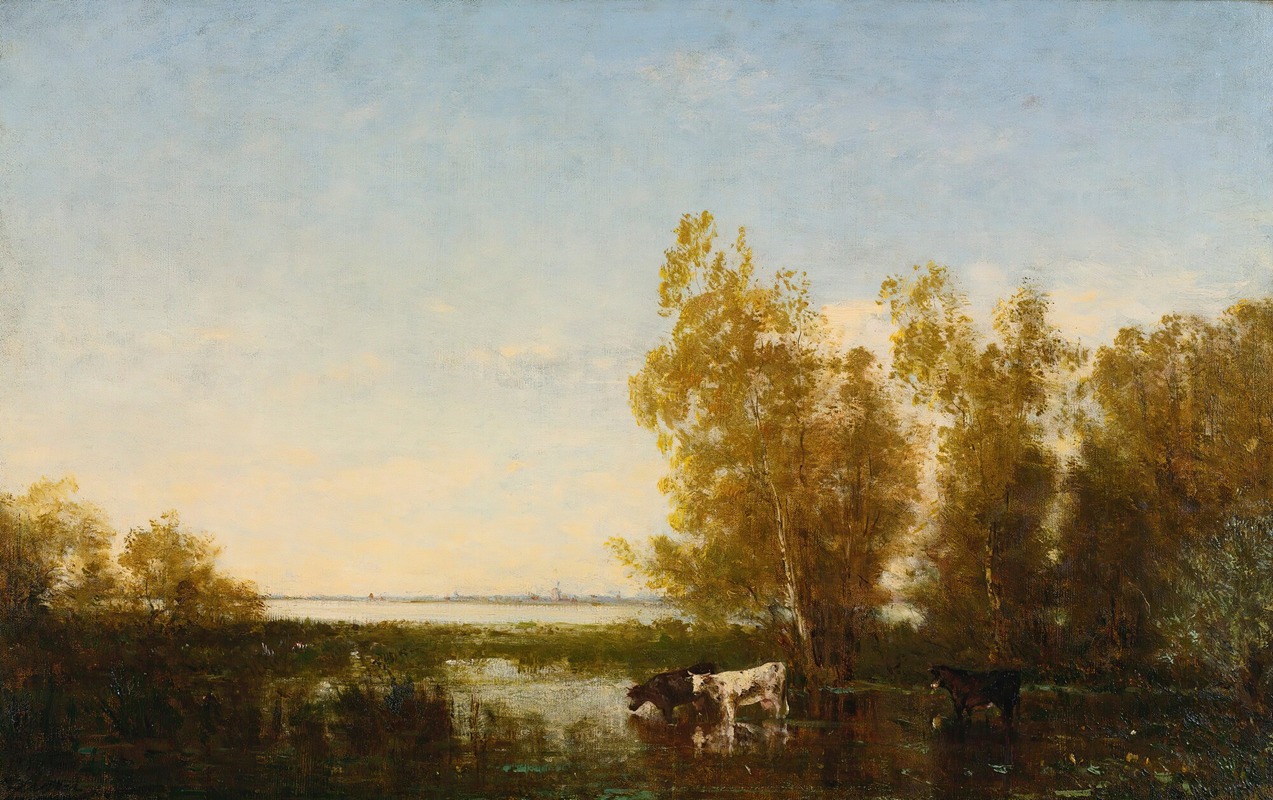
Paysage Hollandaise
A hand-painted replica of Félix Ziem’s masterpiece Paysage Hollandaise, meticulously crafted by professional artists to capture the true essence of the original. Each piece is created with museum-quality canvas and rare mineral pigments, carefully painted by experienced artists with delicate brushstrokes and rich, layered colors to perfectly recreate the texture of the original artwork. Unlike machine-printed reproductions, this hand-painted version brings the painting to life, infused with the artist’s emotions and skill in every stroke. Whether for personal collection or home decoration, it instantly elevates the artistic atmosphere of any space.
Félix Ziem was a 19th-century French painter known for his vibrant landscapes and cityscapes, often capturing the essence of Venice and the Mediterranean. However, his work extended beyond these subjects, and he occasionally explored other regions and themes. One such work is "Paysage Hollandaise," which translates to "Dutch Landscape." This painting reflects Ziem's ability to capture the serene and picturesque qualities of the landscapes he encountered.
"Paysage Hollandaise" is an exemplary piece that showcases Ziem's skill in rendering natural light and atmosphere. Although specific details about the painting's creation date or its current location are not widely documented, it is consistent with Ziem's broader oeuvre, which often depicted tranquil scenes with a focus on the interplay of light and water. His landscapes are characterized by a loose, fluid brushwork that conveys a sense of immediacy and movement, a technique that Ziem mastered over his extensive career.
Ziem's interest in Dutch landscapes may have been influenced by the works of the Dutch Golden Age painters, who were renowned for their detailed and atmospheric depictions of the countryside. While Ziem's style is more impressionistic compared to the meticulous realism of the Dutch masters, he shared their fascination with the effects of light and the beauty of natural settings. In "Paysage Hollandaise," Ziem likely employed a palette that emphasized soft, natural colors, capturing the unique quality of the Dutch light and the serene ambiance of the landscape.
Félix Ziem was born in Beaune, France, in 1821, and he initially trained as an architect before turning to painting. His travels across Europe, particularly to Italy and the Netherlands, greatly influenced his artistic development. Ziem was a part of the Barbizon School, a group of painters who advocated for painting en plein air, or outdoors, to better capture the natural world. This approach is evident in "Paysage Hollandaise," where the spontaneity and freshness of the scene suggest that it may have been painted on location or inspired by sketches made during his travels.
Throughout his career, Ziem achieved considerable success and recognition. He exhibited regularly at the Paris Salon and was awarded the prestigious Légion d'Honneur in 1857. His works were highly sought after by collectors, and he enjoyed the patronage of notable figures, including Napoleon III. Ziem's paintings are now held in numerous public and private collections worldwide, attesting to his enduring legacy as a master of landscape painting.
While "Paysage Hollandaise" may not be as widely known as some of Ziem's Venetian scenes, it remains an important part of his body of work, illustrating his versatility and the breadth of his artistic interests. The painting exemplifies Ziem's ability to convey the tranquility and beauty of the natural world, a quality that continues to resonate with viewers today.





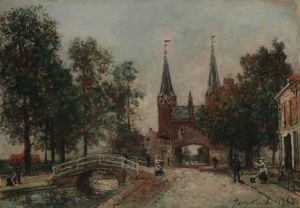
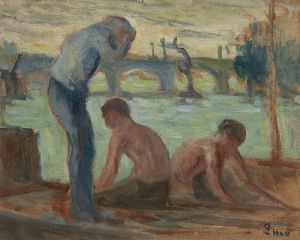
![Le Moulin [Environs De Martigues]](/imgs/236206/s/felix-ziem-le-moulin-environs-de-martigues-f7c308fe.jpg)


